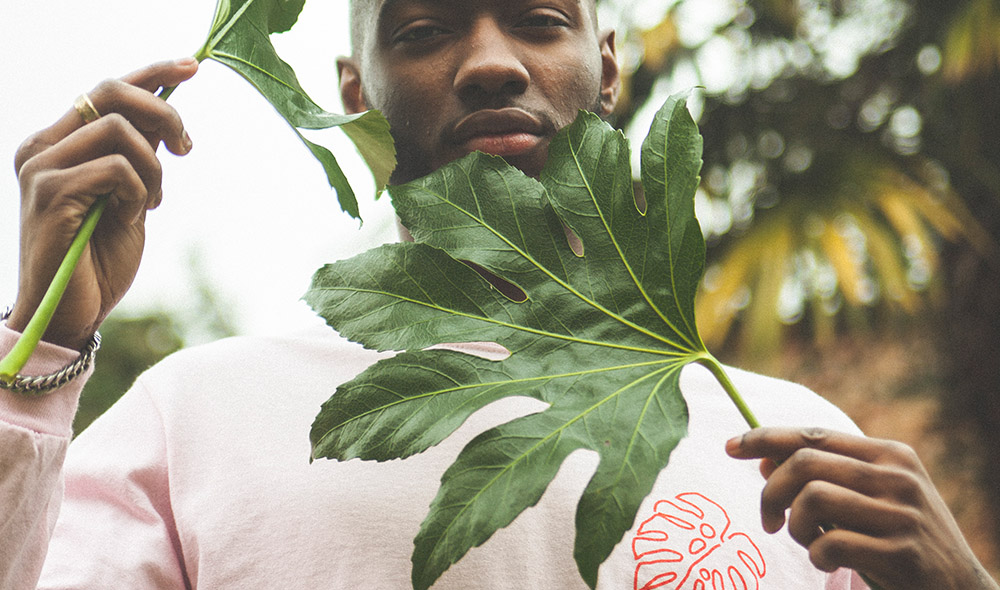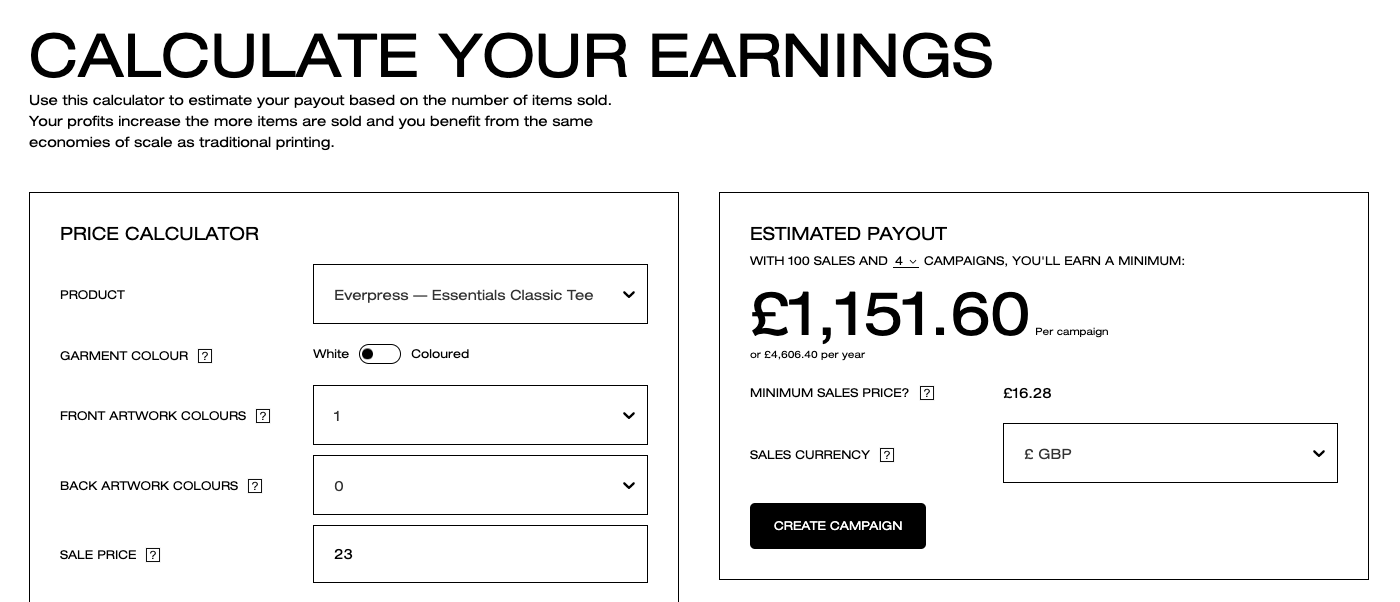
When we hear from creators who want to make money selling T-shirts throughout the year, their biggest concerns are finding the time to create new designs, and not wanting to ask too much from their fans. While we know it can feel a bit unnatural to start promoting to your audience, time and time again we’ve found that if people love your work then there’ll be an appetite for your T-shirts.
Everpress is already a significant source of income for a number of our community members. Influencer Mika Francis, illustrator Evan Cohen, and the internationally renowned music platform WWFM all run at least four campaigns with us annually, proving it can really pay to plan your year with Everpress. Taking the time to line up a schedule in advance will give you deadlines to work towards, help you take advantage of peak times, and make sure that things like samples get to you in good time.
Our price calculator makes it easy for you to plot your yearly earnings yourself. But to give you a rough idea here is an example based on a white Everpress Essentials Classic Tee, with a 1 colour design, priced at £23:
Sell 25 T-shirts = £257.30 per campaign (4 campaigns per year = £1,029.20)
Sell 100 T-shirts = £1,151.60 per campaign (4 campaigns per year = £4,606.40)
Sell 500 T-shirts = £6,070 per campaign (4 campaigns per year = £24,280.00)

How Many Campaigns?
Before you get stuck in to planning, the first thing to think about is how many campaigns you’ll want to run over the course of the year. There’s no magic formula for working out the best number for you, but taking into account both the lessons from your own experience, and what’s worked well for other creators, should stand you in good stead.
We typically see people run between 4 and 6 campaigns over the course of a year, and while this is by no means the concrete number you should be aiming for, it’s a useful benchmark if you haven’t tried running a series of pre-order campaigns before.
In terms of thinking about how you’ve performed in previous campaigns, some of the most important factors to consider are the interest you’ve seen, your sales figures, and how the campaign played out with your audience:
- If you had a slower start you might find planning for fewer campaigns will help you get to grips with selling, and give you time to build up a following and appetite for your designs. (And remember, often it’s taken our best creators a couple of campaigns to really hit their stride: if you’re after advice on tackling your second campaign our guide has tonnes of tips).
- If you’ve had a great reception off the bat then that’s a good indicator that there’s an existing appetite for your designs, and you’re in a safer position to aim for more campaigns over the year.
Think about the kind of campaigns you’ll be running too. If you prefer shorter, flash campaigns of under two weeks, then you’ll have more space across the year for more campaigns. If you prefer longer campaigns, of say 30 days, then having fewer will give you the space to really focus on each campaign, and take stock in between.
And finally, don’t be afraid to follow what’s working for other creators. If you love how one of our other creators is managing their campaigns, feel free to reach out to us and ask for tips from what they’re doing.
Building A Schedule
Once you’ve decided how many campaigns you’re going to be running, you’re ready to map out your year. And though we know planning for a whole year can sound like a mammoth task, this bit is really as simple as making sure you’ve factored in key dates and given yourself deadlines to work towards, in order to make your campaign go as smoothly as possible.
The Best Time To Drop
There are definitely times of the week, month and year that will serve you better than others, and working this out requires a combination of thinking about your own schedule, along with what will work best with your audience. From our own experience, we can say that:
For Your Audience:
- Timing a campaign to launch, or end, just after payday (usually the last working business day of the month) can prove really effective
- If you’re running a themed campaign think about how it can tie in to wider events. For instance, we ran our own Love Is The Message campaign, which explored modern love, to coincide with Valentine’s Day
For You:
- It tends to be best to avoid launching when you have other promo commitments. Not only can it confuse the message that you’re sending out, but it makes your own workload bigger
- Give yourself time between each campaign. Unless you have a lot of experience running pre order campaigns you’ll most likely want to take stock in between so you can keep improving on how you’ve done
Your Campaign As Promo
Whatever other projects you’ve got on the go, T-shirts can be a great way to help raise awareness, money, or both, especially if you’ve got the artwork already created. Whether it’s an album release, a podcast you’re starting, a book you’ve got coming out, or a design series, it’s always worth thinking about bringing out a T-shirt alongside it.
We’ve seen loads of spin-off T-shirt campaigns on our platform, and one of our favourites has been by illustrator Sophy Hollington. Having collaborated with writer David Keenan on a linocut folklore-influenced tarot deck for Rough Trade Books, she realised the resulting illustrations were too good not to extend to another medium, so she put out her ‘Automatic Tarot’ series of long sleeves. We loved it because she really made the tees her own, and it meant her art got even more exposure than it otherwise would have.
Looking for advice on how to run a successful campaign from start to finish? Head here!


